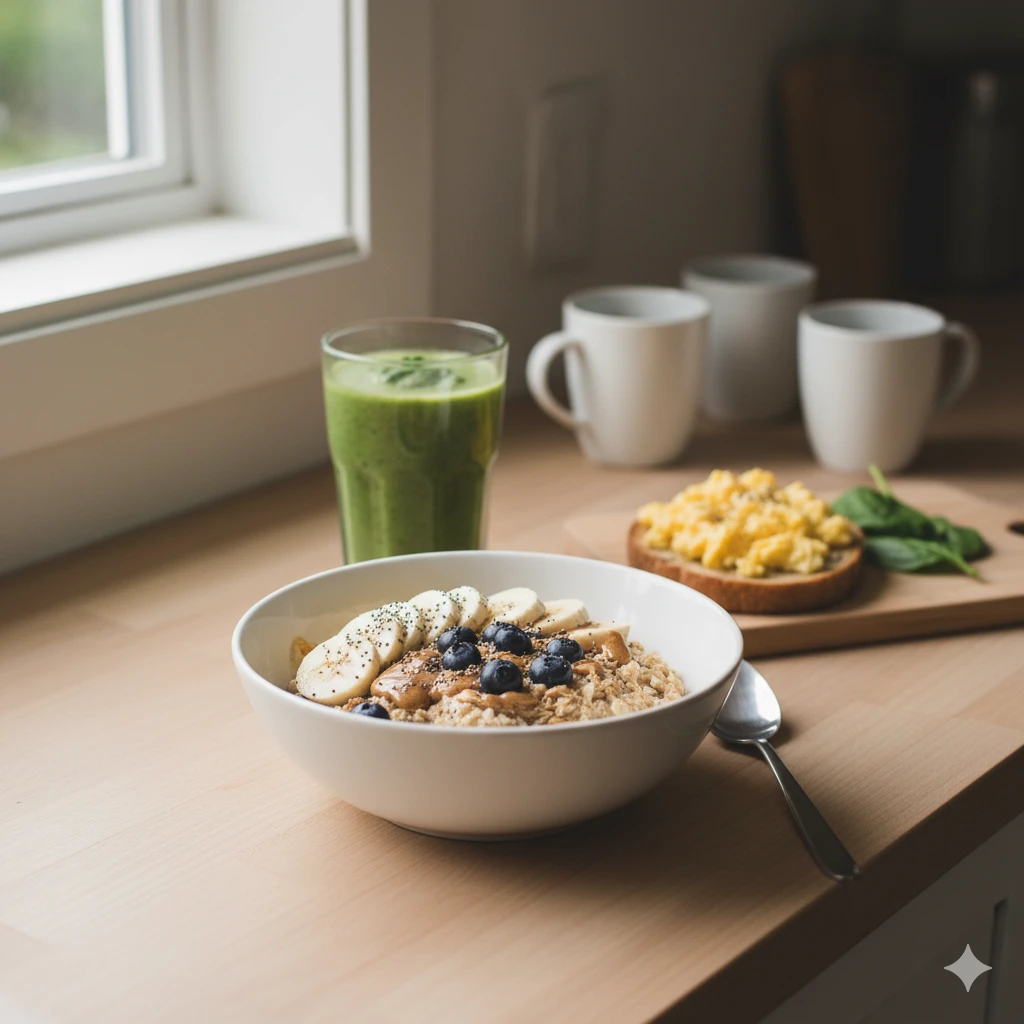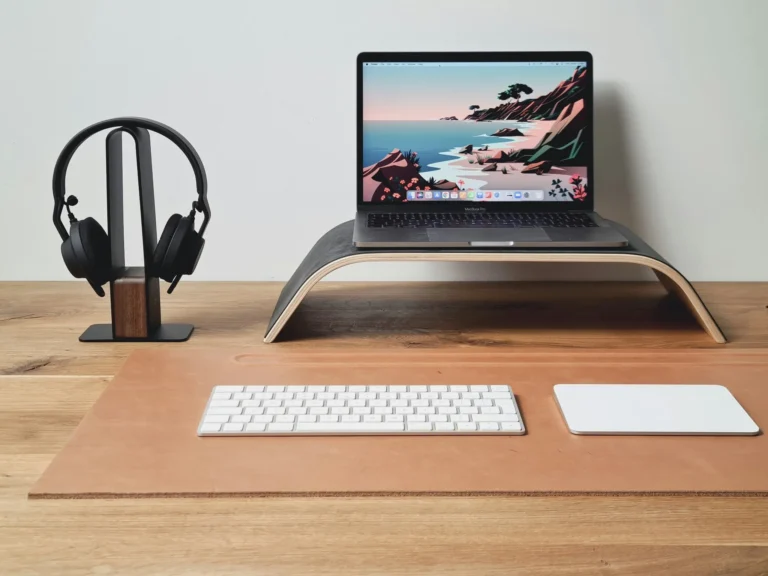The Morning Routine for Productivity: How to Start Your Day Right
For years, mornings felt like a race I never signed up for. I would roll out of bed at the last possible minute, gulp down coffee, and dive straight into emails. By mid-afternoon, I was drained, unfocused, and resentful of my never-ending to-do list. Side projects sat untouched, and even my best efforts at work felt reactive instead of intentional.
Everything began to shift when I created a morning routine for productivity—a structure that gave my mornings purpose, steadied my energy, and allowed me to focus on what truly mattered. A morning ritual doesn’t need to be a strict two-hour routine or filled with trendy habits from social media. It simply needs to prime your mind and body for the day ahead.
In this guide, I’ll share why mornings matter so much, break down the essential productive morning habits, and give you practical morning routine tips you can adapt to your lifestyle.
Why Morning Routines Matter for Productivity
A strong start creates momentum. Researchers from Harvard Business School note that people who structure their mornings report higher productivity and less decision fatigue throughout the day. By starting the morning with clarity, you conserve mental energy for the big decisions and creative tasks ahead.
Think of it like building a runway: if the first hour of your day is smooth, the “takeoff” into your tasks feels lighter and faster. On the other hand, if you wake up rushing, skipping meals, and reacting to notifications, your day is off balance before it even begins.
Across industries, from CEOs to athletes to writers, one truth remains: those with a deliberate daily routine for success tend to outperform those without one. If you want to dive deeper into practical frameworks for staying on track all day, see Time Management Tips for Side Hustlers with a Full-Time Job.
Core Elements of a Morning Routine for Productivity
The most effective routines are not complicated—they’re consistent. Let’s explore five elements that can transform your mornings.
Wake Up with Intention
Most people hit snooze not because they need more sleep, but because mornings lack purpose. Building intention is powerful. Research from the University of Toronto found that people who begin their day with a specific morning goal experience 25% higher satisfaction.
For me, intention began with something simple: journaling for 10 minutes before opening my laptop. That small act made me look forward to mornings.

👉 My Experience: At first, I didn’t think I was the “journaling type.” But when I gave it a try, I realized those 10 minutes acted like a reset button. Instead of feeling like my mind was cluttered with yesterday’s unfinished work, I started with a clean slate. On the days I skipped it, I noticed I slipped back into rushing and distraction.
📊 What I measured: After two weeks of journaling every morning, I realized I was opening my laptop 20 minutes earlier than usual, simply because I felt ready to focus instead of stalling.
💡 Morning routine tip: Place a notebook and pen beside your bed tonight. Tomorrow morning, write one sentence about how you want your day to feel.
If you’re drawn to simplifying your mornings further, check out Minimalist Living: How Owning Less Saves You More. Sometimes, less really is more.
Move Your Body
Physical movement doesn’t need to mean a 5 a.m. gym session. A brisk walk, yoga, or a quick bodyweight circuit can significantly improve energy. According to the American Psychological Association, moderate morning exercise enhances concentration for up to two hours afterward.
Personally, I found that a 15-minute stretch routine left me sharper in my first work meeting and less reliant on caffeine.

👉 My Experience: When I first experimented with morning movement, I thought I needed a full workout. But I quickly burned out. What actually stuck was a short neighborhood walk while listening to a podcast. It wasn’t intense, but it gave me energy, helped me think through ideas, and even made my side hustle projects feel less overwhelming.
📊 What I measured: Over one month, I tracked my caffeine intake. On mornings when I walked, I averaged 1.5 cups of coffee. On sedentary mornings, that jumped to 2.5 cups. Cutting just one cup saved me money and kept my energy more stable.
💡 Morning routine tip: If you only have five minutes, do 20 squats, 10 push-ups, and a forward fold stretch. Small efforts compound.
Fuel with a Simple Breakfast
Skipping breakfast might feel like a time-saver, but often it steals your energy later. Balanced fuel stabilizes blood sugar and sharpens focus. A review study on breakfast and cognition found that eating a balanced breakfast improves attention, memory, and executive function compared to skipping meals.
You don’t need a gourmet spread—think oatmeal with fruit, a smoothie, or eggs on toast. When I started making a quick smoothie with spinach, banana, and protein powder, my 11 a.m. slump disappeared.

💡 Morning routine tip: Prep breakfast ingredients the night before so you can “grab and blend” in under three minutes.
Looking for ways to cut morning meal prep time? My guide on Beginner’s Guide to Freezer Meals That Save Time and Money shows how prepping ahead keeps mornings effortless.
Plan Your Day Before It Starts
Productivity isn’t about doing more; it’s about doing what matters. That’s why morning planning is essential. I use the “Rule of Three”: one major work task, one personal task, and one task for my side hustle.
This practice aligns with research from productivity experts suggesting that focusing on just three priorities dramatically increases follow-through. Writing them down each morning creates an anchor that keeps distractions from derailing you.
👉 My Experience: I used to open my inbox first thing in the morning, and suddenly it was noon and I hadn’t touched my own priorities. Switching to the “top three” method was like flipping a switch. One week, I made “finish draft for Simple Coffers post” my top side-hustle task. By lunchtime, it was done—and that momentum carried into my workday. I realized that without a written plan, I was always reacting instead of leading my day.
📊 What I measured: For two consecutive weeks, I tracked how much time slipped into “reactive work.” Before the top-three method, I averaged 2.5 hours/day of email and low-value tasks before starting anything important. After adopting the system, that dropped to 45 minutes/day, giving me back nearly 10 hours a week for meaningful work.
💡 Morning routine tip: Use a sticky note or digital planner to list your “top three” before checking email.

If tech helps you stay organized, don’t miss Digital Tools Every Side Hustler Should Use to Save Time. Pairing analog planning with smart tools can keep you two steps ahead.
Protect Your Mental Space
The first thing you consume mentally shapes your mood. If you scroll social media in bed, you let other people’s lives dictate your emotional state. Instead, protect your mental space with intentional input.
Journaling, gratitude practices, or reading a few pages of a book set a calm tone. At UC Davis, research on gratitude and well-being shows that daily gratitude practices reduce stress hormones and increase resilience. Personally, writing three things I’m grateful for while sipping coffee shifted my mornings from stressed to centered.

💡 Morning routine tip: Keep your phone in another room and start your day with a five-minute gratitude exercise.
Additional Morning Routine Tips for Busy People
One size doesn’t fit all. Here’s how to tailor a daily routine for success to your lifestyle:
- The 15-Minute Routine: Stretch for 5 minutes, journal for 5 minutes, list your top three tasks.
- The 30-Minute Routine: Light workout, quick breakfast, gratitude journaling.
- The 60-Minute Routine: Full workout, reading, journaling, breakfast, daily planning.
Whether you’re a student, remote worker, or parent, flexibility is key. What matters most is showing up consistently, not perfection.
And if saving both time and money is part of your productivity plan, you might enjoy 9 Frugal Living Hacks to Save $100 Every Month.
Real-Life Stories of Transformation
When I finally committed to a structured morning routine for productivity, I noticed immediate results: fewer rushed mornings, steadier energy, and space for my writing projects.
A colleague of mine, Anna, implemented a 20-minute morning walk before work. Within weeks, she reported being less anxious and more creative. Another friend, Daniel, used gratitude journaling to combat burnout. He described it as “the cheapest therapy session I’ve ever had.”
These stories prove that productive morning habits don’t need to be extravagant—they just need to be consistent.
Common Morning Routine Mistakes to Avoid
- Trying to do too much at once: Adding five new habits overnight often leads to burnout. Start with one.
- Ignoring evenings: A successful morning begins the night before. Lay out clothes, prep breakfast, and set boundaries on late-night scrolling.
- Rigid perfectionism: Life happens. Missing a day doesn’t mean failure. Consistency matters more than flawless execution.
Quick Tips Box
- Put your phone on “Do Not Disturb” until after breakfast.
- Drink a glass of water immediately upon waking.
- Use natural light or a sunrise alarm to wake up gently.
- Keep a dedicated “morning playlist” to boost mood.
- Track your routine for one week, then adjust.
These small morning routine tips can turn into long-term habits that reshape your day.
Final Thoughts: How to Start Your Day Right
Your mornings are the foundation of your entire day. By waking with intention, moving your body, fueling properly, planning priorities, and protecting your mental space, you give yourself a powerful advantage.
A daily routine for success doesn’t need to be long, rigid, or Instagram-worthy. It simply needs to serve you. Start with one habit this week, then layer on others. Over time, the compounding effect will surprise you.
🚀 Next Steps to Build Your Own Morning Routine for Productivity

- Pick one habit from this guide (movement, gratitude, or planning).
- Try it for seven days without adding anything else.
- At the end of the week, reflect: Did it make your mornings smoother?
- If yes, layer in a second habit and repeat the process.
- In a month, you’ll have built a sustainable system without overwhelm.
Your mornings are your launchpad. Start small, stay consistent, and you’ll be amazed how quickly your days transform.





